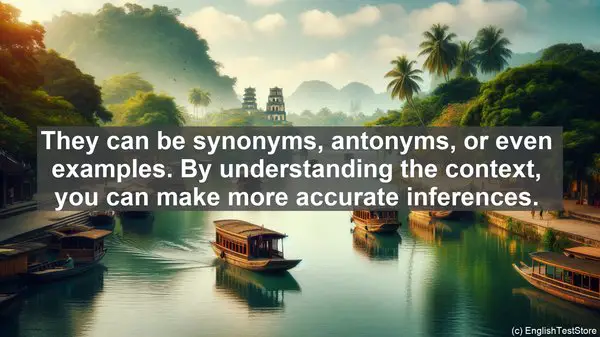Introduction: The Challenge of Inference Questions
Inference questions in TOEFL iBT Reading can be quite challenging. They require you to go beyond the text and make logical connections. But don’t worry! In this video, we’ll equip you with 10 powerful strategies to tackle them with confidence.

1. Mastering Context Clues
Context clues are your best friends in inference questions. Pay attention to words or phrases that provide hints about the answer. They can be synonyms, antonyms, or even examples. By understanding the context, you can make more accurate inferences.

2. Analyzing Cause and Effect
Often, there’s a cause-and-effect relationship hidden in the text. By identifying the cause, you can infer the effect, and vice versa. Look for keywords like ‘because,’ ‘due to,’ or ‘result in’ to spot these connections.
3. Recognizing Patterns
Texts in TOEFL iBT Reading often follow certain patterns. For example, a comparison or contrast structure. By recognizing these patterns, you can anticipate the author’s intention and make more accurate inferences.
4. Understanding the Author’s Tone
The author’s tone can reveal a lot. It can indicate agreement, disagreement, or even skepticism. By understanding the tone, you can infer the author’s stance on a particular issue.
5. Making Logical Connections
Inference questions require you to connect the dots. Sometimes, the answer may not be explicitly stated, but you can make a logical connection based on the information provided. Use your critical thinking skills to bridge the gaps.
6. Considering the Big Picture
TOEFL iBT Reading passages are part of a larger context. The questions often relate to the main idea or the overall theme. By considering the big picture, you can make more informed inferences.
7. Eliminating Distractions
In multiple-choice inference questions, there are often distractors. These are options that may seem plausible at first, but upon closer inspection, they don’t align with the text. By eliminating these distractions, you can narrow down the choices and increase your chances of selecting the correct answer.
8. Using Prior Knowledge
While TOEFL iBT Reading passages cover a wide range of topics, you can still apply your prior knowledge. For example, if the passage is about climate change, and the question asks about its impact, you can draw on your general knowledge about the subject to make an inference.
9. Taking Notes Strategically
Note-taking is crucial in TOEFL iBT Reading. But it’s not about transcribing the entire passage. Instead, focus on key ideas, relationships, and any information that can help you make inferences. This way, you have a concise reference when answering the questions.
10. Practicing, Practicing, Practicing
Like any skill, mastering inference questions requires practice. The more you expose yourself to different passages and question types, the better you become at making accurate inferences. Use reputable TOEFL iBT resources for targeted practice.
